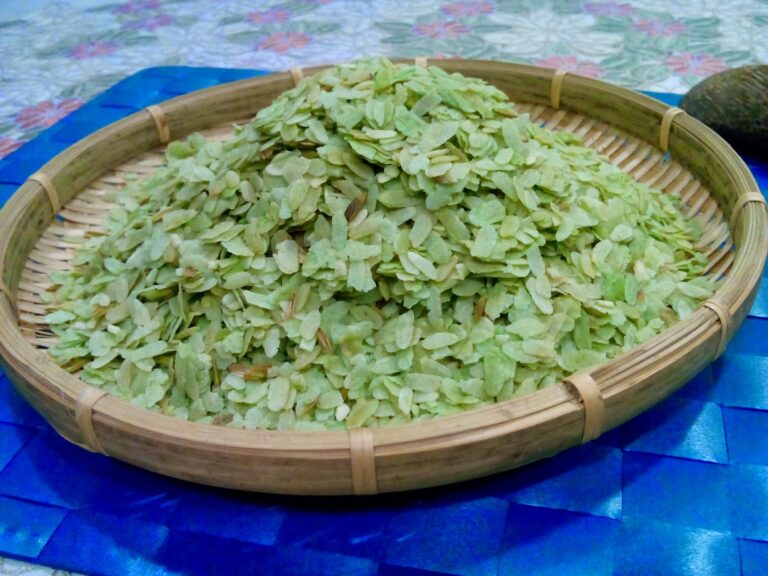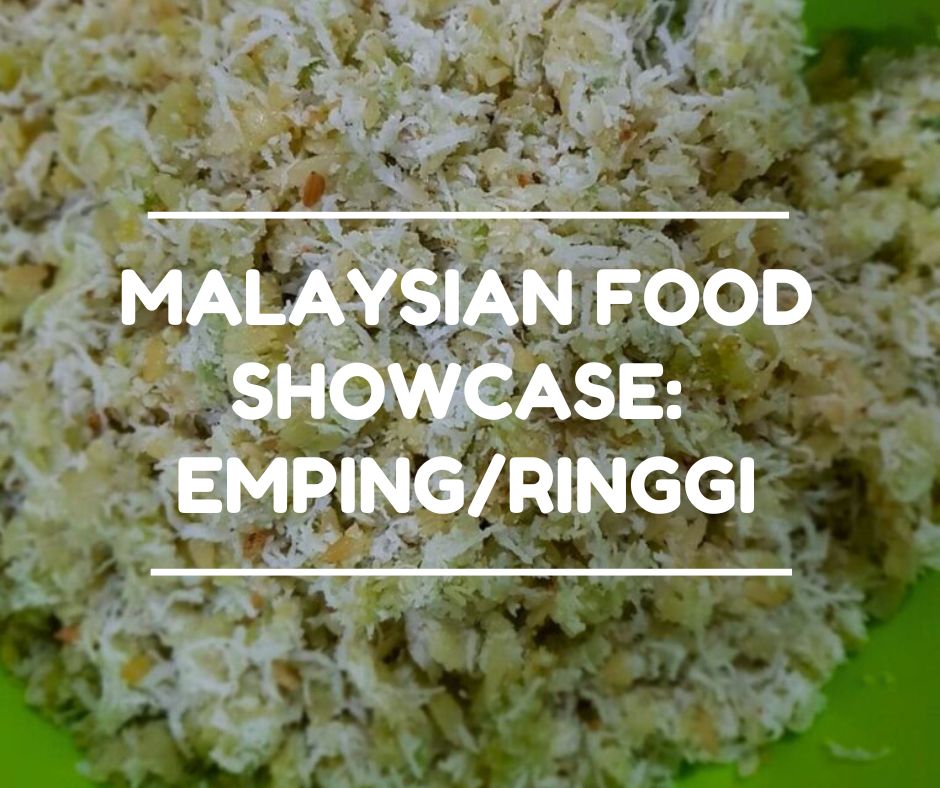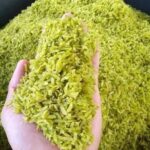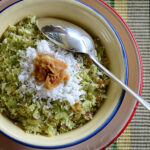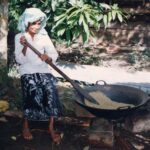Emping/Ringgi: The Glutinous Rice Flakes of Perlis and Kedah
Emping/Ringgi is a traditional glutinous rice flakes from the golden paddies of Peninsular Malaysia’s northern states, delicately preserved in coconut and sugar. Its roots also stretch into neighboring Kedah and southern Thailand (Satun and Songkhla). The dish comes in two main forms: ringgi (made from young green glutinous rice) and emping (from nearly mature white grains). Both are flaked rice snacks, but the method, texture, colour, and taste vary depending on the rice’s maturity.
Though made from glutinous rice, the difference between emping and ringgi lies in the timing of the harvest and the nuances of their preparation. Emping is made from glutinous rice that is almost fully matured. This rice is harvested later in the season, roasted while still hot, and pounded immediately to release its husk and flatten the grain. The result is a flake that is white in color, light, and slightly crunchy, with a deeper roasted aroma. Emping’s texture is firmer and its shelf life longer.
Ringgi, in contrast, uses green, immature rice, which yields a soft, chewy texture and a naturally sweet flavour. The taste is mild and comforting, often likened to a tender cereal. Because of these differences, emping is more versatile. Ringgi is mostly eaten sweet, emping can swing between sweet and savoury, depending on what the cook desires.
Making emping or ringgi begins long before a fire is lit. It starts in the paddy fields, with the careful timing of the rice harvest.
- Mengetam (Harvesting) – Farmers use a small, curved blade called renggam to pluck either young (ringgi) or nearly mature (emping) glutinous rice. Preferred rice types include pulut gantung alu, pulut galah, pulut sutera, and pulut hitam.
- Mengukur (Stripping) – At home, rice grains are removed from their stalks using tools like coconut shells, tudung cerek (kettle lids), or bamboo slats. The stripped grains are then separated from husks and debris using traditional winnowing trays called nyiru.
- Menggoreng (Sangai Roasting) – The grains are roasted dry in huge iron pans over wood fire, constantly stirred with long wooden paddles to ensure even toasting. This stage can take hours and is done communally, as the fire, smoke, and heat require rotation among helpers.
- Menumbuk (Pounding) – For emping, the hot grains are pounded immediately while still warm using a lesung tangan (hand mortar) or lesung kaki (foot-pedaled mortar). For ringgi, the grains are cooled first, then pounded multiple times, up to four cycles, to gently release the tender green interior.
Water is sometimes added to soften the grains during pounding. After that, everything is winnowed again to remove any lingering husk, and what remains is light, soft flakes full of roasted aroma.
In rural Perlis and Kedah, the production usually took place during post-harvest season, especially under the full moon when farmers had free time. Families and neighbours gathered in courtyards to work together, turning the making of emping into a social gathering known as “pesta mengemping”.
Girls pounded the rice under the eyes of watchful elders, while children hovered nearby, hoping for a warm bite. Village boys, meanwhile, hoped for an excuse to offer help, or at least, a smile. These gatherings served as informal matchmaking spaces, as well as opportunities for knowledge transfer and community bonding. It was the kampung version of a family reunion and food fair rolled into one.
Warm and fragile, emping and ringgi are best enjoyed as soon as they’re made, their aromas still clinging from the smoky fires they were roasted over. The most beloved way to eat them is simple and time-tested: mix them with freshly grated coconut, a sprinkle of palm sugar or brown sugar, and just a pinch of salt. That slight saltiness sharpens the sweetness, lifting the mellow flavours of the rice.
In some villages, buffalo milk (susu kerbau) was poured over the flakes for a creamy, slightly gamy breakfast. Elsewhere, especially among the older generation, emping was often served in the evening with a steaming cup of black kopi-o, creating a contrast of hot drink and warm grain that was both nostalgic and comforting. More creative renditions have appeared in recent times, like versions with crushed peanuts and toasted sesame seeds, or drizzled with coconut milk for added richness. For those who crave savory, kerabu emping is a lesser-known gem. It is made with emping flakes tossed in a wok with dried shrimp, red onions, lemongrass, chilies, and grated coconut. Fragrant, smoky, and a little fiery, it’s proof that even humble rice flakes can hold their own in a bold, flavourful dish.
Finding genuine ringgi or emping today is like chasing a disappearing smell from childhood. Few young people know how to make it. Traditional tools like lesung kaki and renggam are now museum items, and modern life doesn’t quite allow for twelve-hour food preparations done by a crowd. That said, there are glimmers of revival. Heritage events in Perlis and Kedah, food showcases, and school exhibitions sometimes feature this lost art. You might even catch a bag at Perlis or Kedah markets if you look carefully. And often, it’s made only once a year, in line with harvest traditions. So, if you’re ever spot emping or ringgi, especially warm and wrapped in banana leaf, grab it quick!
